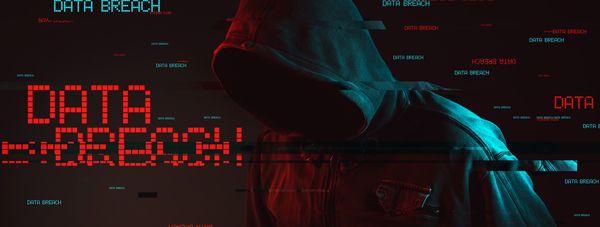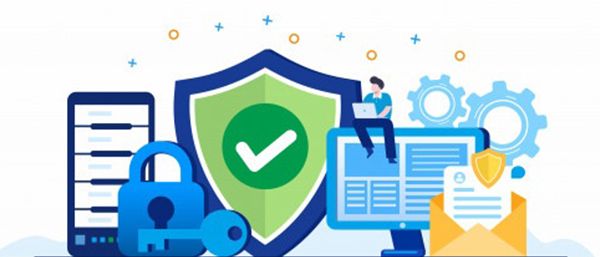
Why Data Centers Need to Control Water Usage
May 13, 2020
Why Hackers Often Target Small and Medium-Sized Businesses
May 20, 2020The technology is evolving at an alarming rate to reshape our daily lives.
Smartphones, computers, laptops, and tablets keep surrounding us, 24×7!
Actually, we all are surrounded by technology and can’t even imagine our lives without it.
Undoubtedly, technology has now become an integral part of our day to day life. It has the potential to improve every aspect of our lives.
Certainly, the evolution of technology is transforming the entire business landscape at an astonishing pace. But, this rapid technological change increases the risk of cyber threats too.
Today, cybersecurity threat is the biggest concern for every business.
However, the reason is quite obvious.
Every single cyber-attack can wipe out all the reputation of your business and can damage the trust of your customers too.
So, What Exactly Is a Cyber Security Threat?
In simple terms, it is the possibility of a cyber-attack that aims to steal, damage, or destroy your data. As technology rises, cybercriminals are getting more advanced. They continuously formulate new strategies to penetrate your security network and reach the core of your business operations. A cyber-attack has the potential to ruin everything, and destabilize an enterprise overnight. Cyber threats involve data breaches, Denial of Service (DoS) attacks, computer viruses, and many more.
In 2019, the global cybercrime cost had reached $2 trillion. According to the experts, cybercrime is going to be the biggest challenge for businesses in the next two decades.
There is a common misconception, according to which, a small business is less vulnerable to cyber-attacks than a large enterprise.
Sadly, that’s not the case!
In fact, small or medium-sized businesses are more at risk.
According to a recent survey report, 61% of cyber-attacks are perpetrated for small businesses. Luckily, there are several ways to guard your business against cyber-attacks. By implementing a high-quality security system, you can slash the vulnerabilities and combat your business from cybersecurity threats.
But, what about the cyber threats that will be encountered in the future?
How will you protect your business from them?
Following are the 6 most likely cyber threats that you should know to protect your business in the future:
Destructive Ransomware Attacks

Soon, a ransomware attack will become one of the top cyber threats, especially to attack small businesses. In simple terms, ransomware is a kind of malware, that hackers use to gain access to the system or server. For cyber attackers, ransomware is only about making money.
The attack happens when hackers stab into your security network to gain access to your data, hold it with them until you pay some kind of ransom in exchange. This means that you have to choose between your high classified data or money. Sadly, such attacks are proving successful and attackers make huge money from organizations.
Do you know, a single click on a hacked website or an email attachment can get a ransomware attack on your enterprise? An infected email attachment consists of malicious code, once you run it, your system gets infected.
LockerGoga, Ryuk, and WannaCry are the popular ransomware attacks.
To protect your business from ransomware attacks you need to avoid downloading unnecessary email attachments without verifying the web address. Also, refrain from sharing finance-related or any other crucial information with anyone via email.
Phishing
Basically, it is a scam!
Phishing is one of the easiest forms of cyber-crimes. It is an unethical way that cybercriminals use to steal your personal information including credit card numbers, account details, passwords, and more sensitive information. Phishing is usually performed through emails. the attack happens when a malicious email is sent to the victim in order to receive the personal information. The email message consists of a link to a fake website that excites victims to fill their personal information.
Do you know, nearly 1.4 million websites are created every month by scammers to avoid the detection of cyber-attacks?
Some more complex phishing methods involve the creation of fake social media profiles and push notifications.
To avoid such scams, you need to educate your staff members about cybersecurity. Your employees should know where to click or not. You can also use cybersecurity tools to identify such suspicious activities before the attack.
MITM Attacks

MITM stands for Man-in-the-middle.
The attack happens when the attacker acts as a spy who secretly intercepts the communication between the two parties that believe that they are communicating directly. MITM attack allows cyber attackers to redirect the browser of the victim to a malevolent site, so they can steal the sensitive information.
Most probably, the free wifi-networks are used for MITM attacks because it’s easy for hackers to get into your system with an unverified router.
The end-point authentication is the best way to tackle MITM attacks. You can also enable two-factor authentication to create a thick security layer.
Insider Attacks
An insider attack is a malicious attack initiated by the action of people inside your organization. Most of the insider attacks are the result of unintentional mistakes like clicking on a malicious URL; though, disgruntled employees may also be responsible for such attacks to take revenge from the firm.
Insider attacks are now becoming a big concern for businesses. It’s easy to protect your business from outsiders but difficult to deal with attacks by your own people.
However, using CYBERShark, you can protect your organization from insider attacks. With the help of this cybersecurity tool, you can monitor and track each and every user activity.
Password Attacks

A Password attack is also known as a Brute Force attack. It is the easiest method that hackers use to gain access to any server or site. The attack happens when the attacker attempts to access a password-protected network by trying multiple passphrases and combinations.
In simple terms, the hacker guesses your password!! It’s quite easier for hackers to guess short passwords, but for the longer passwords, they need to go through millions of combinations. Thus, it’s imperative for everyone to make strong passwords, that cannot be even guessed.
Due to the simplicity of passwords, such attacks are increasing day by day. In 2019, a software-based company named Citrix got hacked by a password attack. This was the biggest breach of 2019.
However, you can prevent your business from this attack by implementing a password complexity requirements policy.
Malware Attacks
A Malware attack is one of the biggest threats to businesses. It is a common cyber-attack, led by cybercriminals who create malicious software and install it on the victim’s system stealthy. Malware includes many cyber threats such as spyware, viruses, Trojan horses, etc.
The intent of Malware attacks is to gain access to sensitive or personal information for financial gains. These attacks can even damage your entire system that costs a lot to repair. Usually, spam emails, malicious site downloads, and connection with unknown devices are responsible for Malware attacks.
However, by using strong end-point solutions, you can prevent your devices from such Malware attacks. Restricted access to suspicious sites can also help you to secure your systems and devices. Also, make regular checks to your central admin panel to make sure that the security system is working fine.
It’s true that as technology advances, the risk of cyber threats increases.
But, no one can stop this!
Thus, it’s high time to get serious on this and develop a strong cybersecurity plan to combat future cyber threats.


1 Comment
i like your way of explanation.